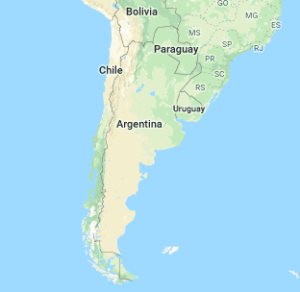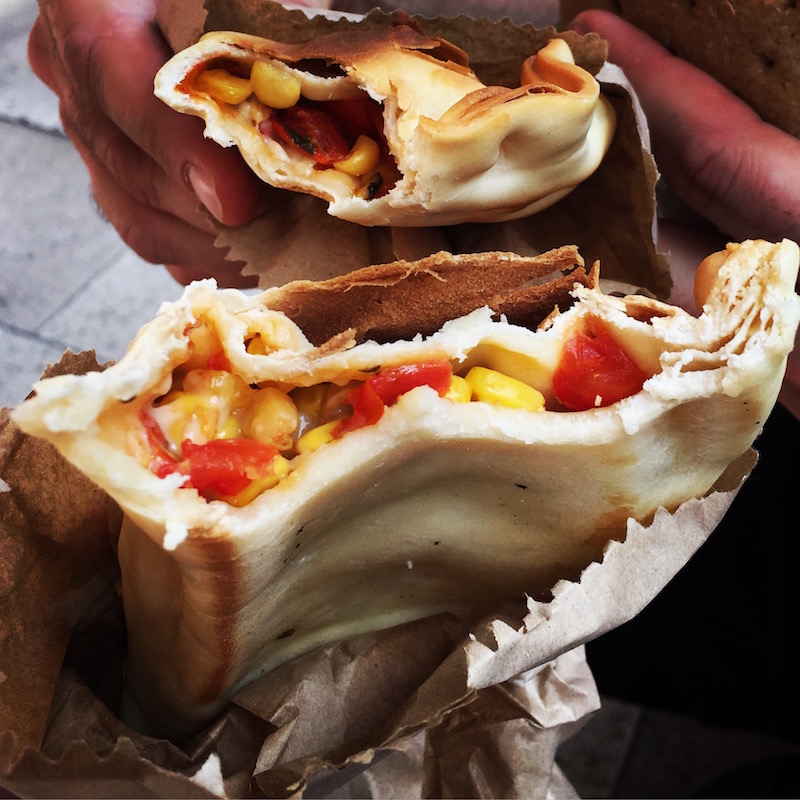Whether visiting Santiago, Vina del Mar, or Valparaiso, here are some Chile Travel Tips that will help you navigate the cities and enjoy your time. There is so much to see and do that we are confident you will have a great time. If you have other Chile Travel Tips to share, please do in the comments section.
If you would rather hear about our 5 weeks in Chile, listen to the Podcast Episode – Podcast 28: Chile Travel – Santiago, Valparaiso, San Pedro de Atacama (& Other Beauty)

Propinas (tips)- A standard tip in Chile is 10%. 95% of restaurants, bars, cafés, etc., will add 10% to la cuenta (the bill). This tip should be properly stated on the receipt somewhere (usually towards the bottom). 10% is the “expected” or customary amount if the service was good, however, if you feel your service was exceptional you should consider giving more. Note: a challenge may be actually obtaining la cuenta.
In Chile, it is customary for Chileans to eat and drink and then socialize for quite some time. It is proper to ask for the check, “la cuenta, por favor (the check, please)”, as opposed to the waiter/ waitress bringing the check to your table when you are finished eating. Another situation in which it is customary to tip is at the supermarket. The clerk who bags your groceries is usually offered a few hundred pesos for his/her service. For taxi drivers, it is customary to round up the taxi fare. If the driver goes out of his or her way (helps with bags, makes an extra stop, etc.) it is customary to give a 10% tip.
El lenguaje (the language)- Spanish is the official language in Chile. If you plan on traveling to Chile and speak very little Spanish you will have difficulties communicating at times with people. There are some restaurants that have English versions of their menus however these are few and far between. I suggest you learn a few key Spanish phrases/ words/ directions prior to your travels to Chile that will help you communicate with people tremendously. One thing to note is that Chilean Spanish is quite different from traditional Spanish. Between the use of slang and fast-paced talking, it is sometimes hard to follow a conversation.
Vino (wine) en el supermercados (supermarkets) vs. vino en la tienda de licores (liquor store)- Chile has the perfect weather for growing wine grapes. Chile’s wines are fairly inexpensive as well. When it comes to purchasing “una botella de vino” (a bottle of wine) at a supermarket vs. a liquor store, I found that is much cheaper to purchase the exact same bottle of wine at a supermarket vs. a liquor store. Just a little tip! A great Malbec is Casillero del Diablo, $4,200 CLP ($6.50 USD/ bottle) and Misiones De Rengo Malbec Reserva, $34,000 CLP ($52.70 USD/ bottle).

Transporte público (public transportation)- I wish Indianapolis had public transport like Chile does. In Santiago, there is a Metro (subway) system. You can purchase a Tarjeta bip for $1,500 CLP ($2.40 USD) and you can recharge it at any metro station. It can also be used for multiple passengers. You can use the metro system to take you to multiple bus stations along the way. Chiles bus service is inexpensive, reliable, and efficient. There are “micro” buses (inter-communal buses) that go more than one zone as defined by their multiple colors.
The local buses stay in one zone and are painted one color. At each metro station, there is a sign that states which buses will stop at the station. The “micros” and local buses each have a route number and a sign stating a list of the main stops on its front right window. If you are ever unsure if the bus will stop at your desired destination, simply hop on the bus and ask the driver, “a Playa De Sol” (to X Destination).
Note: make sure you do this quickly, the buses move very quickly and drivers are constantly allowing people on and off while making proper change for people and trying to get to the next destination quickly. If you hesitate, the bus may take off and you may be at the next stop before you even ask your question! There are also long-distance buses for trips you may want to take like we did from Santiago to Viña Del Mar (1 hour 35 minutes).
There are 2 main bus companies; turbus and Pullman. We used turbus. You can purchase online or buy in person the day of. The buses run once every 20 minutes, you have an assigned seat, the buses have air conditioning, they are very spacious, they have a separate area for your luggage below (if you are traveling with a lot of luggage), they have a bathroom onboard, and they are very comfortable. Our trip cost $4,100 CLP ($6.40/ person) one-way from Santiago to Viña Del Mar.
Getting from Santiago to Viña Del Mar (using public transport)- We stayed in Santiago for a week and our next stop was a beach town called Viña Del Mar (approximately 1.5 hours by bus away). Getting to Viña Del Mar by public transport is surprisingly easy even though there are not many blogs/ posts about it.
We used our Tarjeta bip (metro card), got on the redline at Bequedano station (closest station to where we were staying in Bellavista) and took the Metro to Pajaritos station (second to last stop on the red line). At Pajaritos station, there is a bus station where you can choose from turbus or Pullman bus. We used turbus and purchased 2 one-way tickets to Viña Del Mar. Our total cost was $8,200 CLP ($12.70 USD).
When we arrived in Viña Del Mar, we chose to walk to our Airbnb apartment as it was a short distance from the bus station. If your location is far from the bus station, there are local “micro” buses and local buses that you can catch to your next destination.
Note: the buses run quite often and it may be confusing as to which bus is actually your bus. Your ticket does not state a bus number per se. Pay attention to the front of the bus and the time your bus is leaving. The bus will state the destination on the top front of the bus. In this case, the bus said “Viña Del Mar”. The ticket you purchase will have a seat number associated with it.
The seat number is located at the top of the ceiling above your seat (like an airplane seat). The turbus buses are “double-decker” buses and there are seats located both on the top and bottom of the bus. You may have to ask your driver where your seat is located prior to boarding your bus so as to not have to go in the wrong spot and crowd the aisles for those trying to board the bus at the same time.
Uber– Although Uber is available in Santiago all throughout Chile, it is fairly new (December 2014). We had difficulties with our pick-up location at the Santiago airport. The pick-up location stated for us to meet in front of the hotel entrance outside of the airport by arrivals.
Our first driver did not show up and then we had to request another driver. Our second driver did not meet us at the aforementioned pick-up location but he did come and meet us and then walk us to where he had parked his vehicle around the corner. Our second driver was very nice and went out of his way to contact us via phone call/ text to locate us and make sure he picked us up. He explained to us that Uber was fairly new and it was a “difficult” situation at the airports.
Through my research, I have since learned that using the Centropuerto Bus, is the best option for those who do not have a lot of luggage who want to get from the Santiago airport into the city. The bus makes several stops near the following Metro stations (going to the airport); Los Héroes, Estación Central, Universidad de Santiago, San Alberto Hurtado, Las Rejas, and Pajaritos. From the airport to the city, in addition to the aforementioned metro stops, the bus also stops at Metros Barrancas, Unión Latino Americana, and Republica.
Buses run approximately every 10 minutes (15 minutes on weekends and holidays). Hours of operation Sunday through Monday (Santiago- Airport; 5:55a to 22:30, and Airport- Santiago; 6:00a to 23:30). Cost: $1,700 CLP ($2.60 USD) one-way/ person or $3,000 CLP ($4.65 USD) round-trip/ person, you are able to pay cash to the driver.
Sundays- Sundays are very quiet in Chile. Very few businesses are open. There are no longer many people walking amongst the streets. It is very peaceful. Most businesses have their storefronts closed. If you are looking to grab a bite to eat, you will most likely have to settle on smaller, family-run restaurants, street food, or small cafés that sell mostly cakes, coffee, tea, ice cream, and pastries.



Leave a Reply